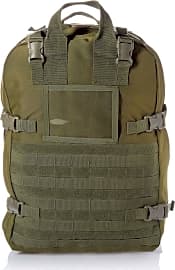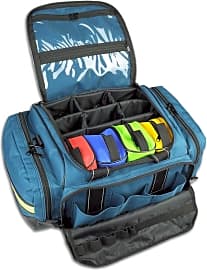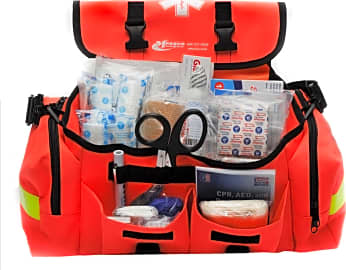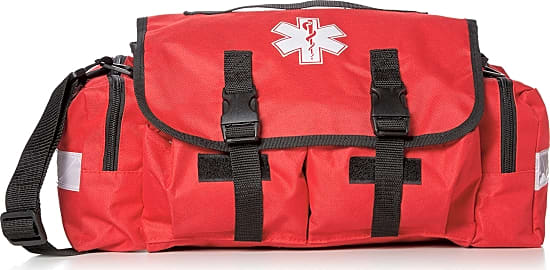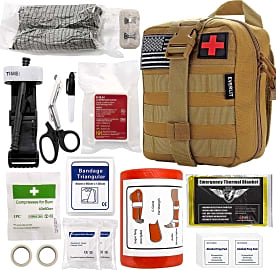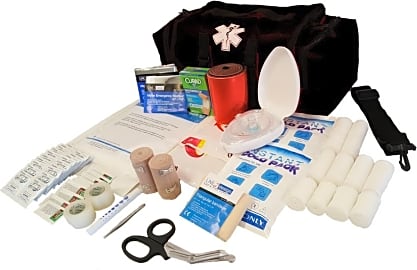The 8 Best Stocked Trauma Bags

This wiki has been updated 39 times since it was first published in July of 2015. Whether you're an EMS technician, a military doctor, or any sort of first responder tasked with getting to injured people quickly and with all the gear needed to stabilize them, a well-stocked trauma bag can save you crucial time getting out the door. Our selection includes options that offer a variety of features and tools to ensure you can do your job effectively and efficiently. When users buy our independently chosen editorial picks, we may earn commissions to help fund the Wiki.
Editor's Notes
February 06, 2020:
A couple of the models on our previous list are no longer available with any supplies in them, including the outstanding Meret Total System. In the place of these we included Lightning X Extra Large and the Everlit Multi-Purpose SOS, the latter of which is ideal for outdoorsy types, as its contents are geared toward the kind of injuries you'll run into in the wilderness, like strong splints for breaks and sprains and the tools to treat serious hemorrhages.
The MFASCO Complete Response First Aid found a spot here, as well, mainly for its inclusion of a sphygmomanometer for checking blood pressure, and we upgraded the Elite First Aid Tactical to the Stomp Medical Kit, which is a heavier-duty backpack and one that comes with more supplies than the previously included Elite model.
What Exactly Is A Trauma Bag?
Trauma bags come complete with items that can hopefully keep a person alive and stable until they get to the hospital, where they can receive more advanced treatment.
No ambulance, firetruck or EMT vehicle is complete without a trauma bag because these are critical tools for first responders. First responders are the emergency services personnel who show up to a scene immediately after a major event, like a fire, bombing, or car accident. When they arrive on scene, they to be ready with all the necessary tools to treat those who might be suffering from traumatic injuries. Trauma bags come complete with items that can hopefully keep a person alive and stable until they get to the hospital, where they can receive more advanced treatment. In many cases, first responders do not know what sort of injuries they'll be treating, so trauma bags need to contain equipment that can treat conceivably any major health issue, from a heart attack to a severed limb.
An example of an item one might find in a trauma bag is a ventilator, which is designed to mechanically push air in and out of the lungs of somebody who may be unconscious and not able to breathe on their own. Trauma bags might also contain portable defibrillators, which can address life-threatening cardiovascular conditions, like an irregular heartbeat. It's not uncommon that someone who has simply witnessed a traumatic event to suffer from one of these conditions, since stress can bring on atrial fibrillation.
In addition to containing a myriad of emergency medical equipment, trauma bags must be rugged enough to withstand the conditions of trauma scenes. Emergency responders may need to run through a burning building, dodge pieces of a falling ceiling, or make it through severe weather conditions. For these reasons, the best trauma kits are water resistant and made from rip-stop materials. They usually contain plenty of easily-accessible, strategically-placed pockets, too, so emergency responders can reach for items without having to take off the bag.
Tips For First Responders
First responders need to think on their feet, so it's best that they're aware of some basic tips before being thrown into an emergency situation. If the victim needs medication, one should always ask if they have any allergies to medicine. If the person is unconscious and cannot answer this question, they may have on an allergy bracelet that lists their allergies. When one cannot speak to the victim, and there is no allergy bracelet present, they should administer the lowest possible dose of medicine, and avoid the most common drugs that cause allergic reactions. Sometimes victims need to be put under while they're still in the ambulance, but paramedics should only use short-acting anesthesia, and let the hospital surgeon decide if the patient needs a general one.
Whenever possible, a paramedic should ask someone to help them carry a person.
When leading a group of people who are visually impaired out of a building, the emergency services person should hold one person by the hand or shoulder, and ask the rest to form a line behind them and hold onto each other. First responders should ask someone if they are able to stand or walk before they assume they should pick them up. If they must pick them up, they should avoid putting any pressure on their chest, arms or legs since this can aggravate their condition. Whenever possible, a paramedic should ask someone to help them carry a person.
Emergency responders often have to talk to people who are in shock, or confused, as well as people who suffer from mental illness. They should look for signs of shock and speak to anyone who is exhibiting them very slowly, giving simple, straightforward commands. When people are panicked they might ramble, which can make it hard for emergency responders to give them important information. But responders shouldn't interrupt the victims since this can aggravate them further. Instead, they should just inform them that they need to move to a safe area rapidly.
The History Of First Aid
Cases of first aid work have been documented as far back as 500 BCE. Historians have found pottery and art from this time depicting ancient Greeks and Romans performing first aid-type techniques, like binding and dressing wounds. The oldest images of first aid usually take place in times of warfare, when hundreds if not thousands of soldiers suffered traumatic injuries that would need to be treated immediately.
Cases of first aid work have been documented as far back as 500 BCE.
More advanced forms of first aid did not come about until the late 18th century. In 1773, a physician named William Hawes began promoting methods of artificial respiration and by 1774, the Royal Humane Society formed, which worked to educate medical professionals on resuscitating individuals who appeared to be dead from drowning. Before this, many doctors would literally blow smoke up the rectum as it was believed this could resuscitate a drowned victim.
Another major improvement to first aid came in the 1770s when French army surgeon Dominique Jean Larrey came up with the idea of ambulances. Larrey's ambulances utilized the same carriages used for artillery. In 1859, Swiss social activist Jean-Henri Dunant saw the devastating aftermath of an Italian battle, which inspired him to form the Red Cross.



